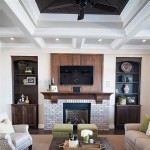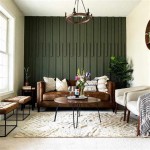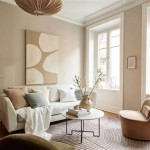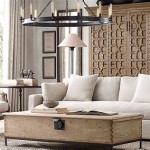Elevating Your Living Space: Comprehensive Living Room Furniture Decor Ideas
The living room serves as the heart of the home, a space for relaxation, entertainment, and social gatherings. As such, thoughtful selection and arrangement of living room furniture are paramount to creating a functional and aesthetically pleasing environment. Effective living room décor isn't merely about filling the space; it's about curating an atmosphere that reflects personal style, enhances comfort, and promotes a sense of well-being. This article explores various facets of living room furniture decor, providing a comprehensive guide to transforming your living room into a welcoming and stylish sanctuary.
Understanding the Foundation: Key Furniture Pieces
The core elements of living room furniture typically encompass seating, tables, storage, and potentially entertainment units. Each element plays a specific role in functionality and contributes to the overall aesthetic. Prioritizing these foundational pieces ensures a balanced and well-equipped living space.
Seating: The most crucial element, seating should be both comfortable and visually appealing. Sofas are often the centerpiece, and their size and style should be proportionate to the room's dimensions. Options abound, including sectional sofas for larger spaces, loveseats for more intimate settings, and sleeper sofas for accommodating guests. Accent chairs provide additional seating and offer opportunities to introduce contrasting colors, textures, or styles. Consider armchairs, wingback chairs, or even comfortable floor cushions to diversify seating options.
Tables: Coffee tables are essential for placing drinks, books, and decorative items. Their height should complement the sofa's seat height for convenient access. Side tables, strategically placed next to seating, provide surfaces for lamps, remote controls, and personal belongings. Console tables can be positioned against walls to display artwork, plants, or serve as a landing zone for keys and mail. Material choices range from wood and metal to glass and stone, each contributing a distinct aesthetic.
Storage: Living rooms often require storage solutions for items such as books, magazines, media equipment, and games. Bookshelves provide vertical storage and can serve as a backdrop for decorative objects. Cabinets and consoles offer concealed storage, maintaining a clutter-free environment. Baskets and decorative boxes can be used to organize smaller items, adding texture and visual interest. Combining open and closed storage options creates a balanced and functional space.
Entertainment Units: For living rooms centered around television viewing, entertainment units are vital. These units typically house the television, audio equipment, and media storage. Modern entertainment units often incorporate cable management systems and provide ample storage for DVDs, game consoles, and other accessories. Consider wall-mounted units to save floor space and create a sleek, contemporary look.
Harmonizing Style and Functionality: Decor and Accessories
Once the foundational furniture is in place, decor and accessories play a critical role in personalizing the space and enhancing its aesthetic appeal. These elements add character, visual interest, and a sense of comfort to the living room.
Rugs: Area rugs define the seating area, provide warmth, and add visual texture to the floor. The size of the rug should be proportionate to the seating arrangement, ideally allowing the front legs of the sofa and chairs to rest on the rug. Rug patterns and colors should complement the room's overall color scheme and style. Consider materials such as wool, cotton, or synthetic fibers, depending on durability and maintenance requirements.
Lighting: Adequate lighting is essential for creating a comfortable and inviting atmosphere. Layer lighting with a combination of ambient, task, and accent lighting. Ambient lighting provides overall illumination, often achieved with overhead fixtures or floor lamps. Task lighting, such as table lamps or adjustable floor lamps, provides focused light for reading or other activities. Accent lighting, such as spotlights or wall sconces, highlights artwork or architectural features. Choose lamps with shades that diffuse light and create a warm glow.
Wall Decor: Wall decor adds personality and visual interest to the living room. Artwork, framed prints, mirrors, and decorative shelves can transform blank walls into focal points. Consider the size and scale of the wall when selecting artwork, and ensure that pieces are hung at eye level. Mirrors can create the illusion of more space and reflect light, making the room feel brighter. Gallery walls, featuring a collection of framed prints or photographs, offer a personalized and visually engaging display.
Textiles: Textiles introduce texture, color, and pattern to the living room. Throw pillows and blankets add comfort and visual interest to sofas and chairs. Choose fabrics with varying textures, such as velvet, linen, or knit, to create a layered and inviting look. Curtains and drapes add privacy, control light, and enhance the room's aesthetic. Consider the weight and opacity of the fabric based on the desired level of light control. Decorative throws can be draped over furniture to add a touch of warmth and style.
Plants and Greenery: Incorporating plants and greenery brings life and freshness to the living room. Potted plants, succulents, and floral arrangements add color and texture to the space. Consider the lighting conditions when selecting plants, and choose varieties that thrive in the available light. Faux plants offer a low-maintenance alternative for those who lack a green thumb. Strategically placed plants can soften the edges of furniture and create a more relaxing atmosphere.
Decorative Objects: Decorative objects add personality and reflect personal interests. Vases, sculptures, candles, and books can be displayed on shelves, tables, and consoles. Curate a collection of objects that have personal meaning and tell a story. Avoid clutter by selectively choosing a few key pieces that complement the room's overall style. Group objects in varying heights and textures to create visually appealing arrangements.
Optimizing Space and Layout: Functionality and Flow
The arrangement of furniture and the utilization of space significantly impact the functionality and flow of the living room. A well-planned layout enhances comfort, promotes conversation, and creates a welcoming environment.
Focal Point: Identify a focal point in the living room, such as a fireplace, a large window, or a statement piece of artwork. Arrange furniture around the focal point to create a sense of balance and visual harmony. The focal point should draw the eye and serve as the center of attention in the room.
Conversation Areas: Arrange seating to facilitate conversation and interaction. Position sofas and chairs facing each other to create an intimate conversation area. Ensure that there is adequate space between seating to allow for comfortable movement. Consider adding a coffee table or ottoman in the center of the seating area to provide a surface for drinks and snacks.
Traffic Flow: Plan the layout to ensure smooth and unobstructed traffic flow throughout the living room. Avoid placing furniture in pathways that block access to doorways or other areas of the room. Create clear pathways that allow people to move freely and comfortably. Consider the placement of electrical outlets and ensure that furniture is positioned within reach of power sources.
Scale and Proportion: Choose furniture that is proportionate to the size of the living room. Avoid overcrowding a small room with oversized furniture. Conversely, don't place undersized furniture in a large room, as it can make the space feel empty and incomplete. Consider the ceiling height when selecting furniture and decor, and choose pieces that complement the room's vertical dimensions.
Zoning: Divide the living room into distinct zones for different activities, such as reading, watching television, or entertaining. Use furniture and rugs to define these zones and create a sense of separation. For example, a reading nook could be created with a comfortable armchair, a floor lamp, and a small side table. The television viewing area could be centered around the entertainment unit and include a comfortable sofa and chairs.
Vertical Space: Utilize vertical space to maximize storage and display opportunities. Bookshelves, wall-mounted shelves, and vertical gardens can add visual interest and provide storage without taking up valuable floor space. Hang artwork and mirrors at varying heights to create a dynamic and visually engaging display.
In essence, successful living room furniture decor hinges on a thoughtful blend of functionality, style, and personalization. By carefully selecting furniture, incorporating complementary decor and accessories, and optimizing the space's layout, it is possible to craft a living room that is equally inviting and reflective of personal taste.

Top Home Decor Trends Best Living Room Ideas

Star Furniture

50 Inspirational Living Room Ideas Design

77 Best Living Room Decor Ideas 2024 Unique

100 Living Room Decorating Ideas Design Photos Of Family Rooms

Living Room Ideas Xo Ashley
:strip_icc()/cdn.cliqueinc.com__cache__posts__212361__-2030968-1483470364.700x0c-8571e60cad7b42a981ab29ae10b5c153-497b002f87af4747b2ab38b560e7c0fd.jpg?strip=all)
How To Decorate A Living Room 20 Ideas And Common Mistakes

How To Decorate A Small Living Room Forbes Home

Living Room Decorating Ideas For Your Style Goodhomes Co In
:strip_icc()/cdn.cliqueinc.com__cache__posts__261309__simple-living-room-ideas-261309-1529706400396-image.700x0c-0157c44cd01a42078aa7e5af7482989a-b0c953a4854f408f9a286dc52a134611.jpg?strip=all)
40 Best Simple Living Room Design And Decor Ideas








